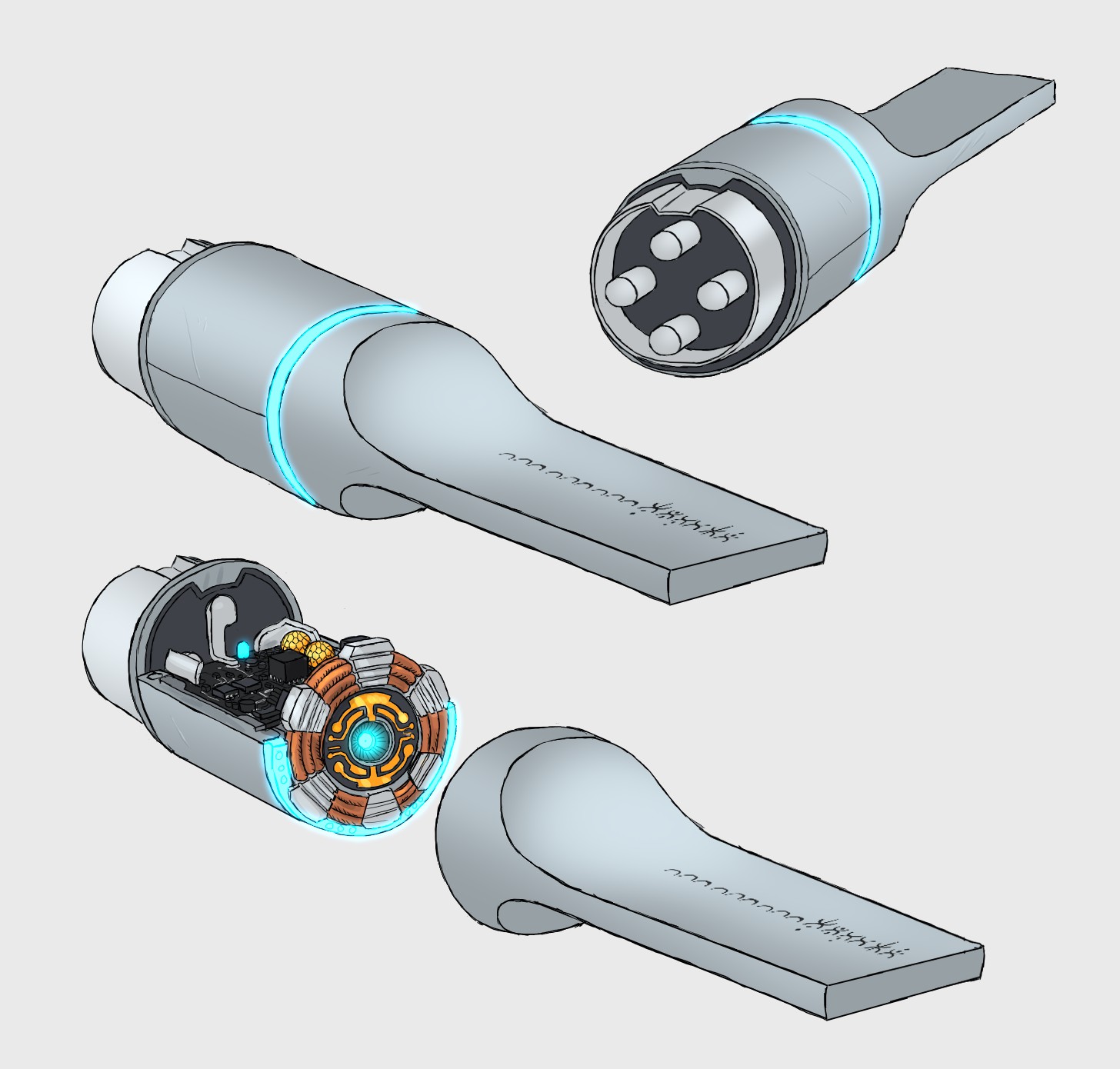Quantum Thread
Quantum Threading is the process of entangling the electron orbitals of a pair of atoms. Unlike traditional quantum entanglement through which it is impossible to send or receive information as observing or altering one pair of the entangled particles will break the entanglement. Thus rather than pairing particles, the electromagnetic field of the atom becomes entangled.
The two particles can then be moved through traditional means to locations and enable superluminal communications. By pushing electrical potential on one end of the atomic pair, electrons can quantum-tunnel to the opposite pair to reconcile the difference. For instance by creating a negative charge, a few electronics can be pulled from the paired particle, conducting a negative electrical charge there. This could be integrated into a nano-scale computer circuit that is used to enable or disable a transistor.
Utility
Quantum-threaded atoms were used to build the Threadway, a sort of galactic internet where before either FTL courier ships or comparatively slow, short ranged, and power-hungry subspace communications were needed to send signals over interstellar distances. Within each star system, there are large specialized servers (typically on the most prominent planet), colloquially referred to as superlooms. The ability to have instantaneous real-time communication that was compact and reliable became responsible for unifying the galaxy.
Quantum threads are also frequently seen in military use. They can allow superluminal communications. This can extremely powerful asset in space combat, as it allows a forward probe or monitoring ship to detect incoming speed of light weapons. Communications are also completely secure unless one end of a thread is captured; they cannot be passively listened to. Quantum threads are vulnerable to quantum jammer, a device that interferes with the entanglement and prevents the electrons from quantum teleporting but does not permanently break the link.
Some highly advanced computer systems can make use of quantum threads internally, as the system computes so fast speed-of-light-lag between different layers of the processing matrix can make it run too slow. These will not use reader chips, instead directly embedding the entangled atoms where they are needed on the processor chip.
There is a limited bandwidth to the amount of information that can be sent through a thread, with the highest speed data transmissions being around one hundred gigahertz/second. (100,000,000,000 bits of information per second, reliably). This poses a hard limit on advanced computer processing speed, and information sent through a single "line" of the threadway. Even faint resonances of quantum jamming can corrupt accuracy requiring data be sent multiple times and error-checked for flipped bits. Bandwidth can be increased by running huge numbers of threads in parallel.
Manufacturing
Quantum threaded atoms are created through the channeling the concentrated outrage of a thousand angry and physics savvy hard-scifi nerds. Shooting an atom through a micro-wormhole with the near end close to a source of intense gravity such as a black hole or neutron star. Since time runs slower on one end of the wormhole than on the other, it is possible to create a time paradox where the atom is in two places at once. By closing the wormhole at a very precise time, the atom can be duplicated and exist both at the near and far ends of the wormhole. This creates the quantum threading effect. Once completed the threaded atom is installed into a paired set of reader pegs which can be slotted by way of a universal port
Access & Availability
Moderate
Related Species




Comments